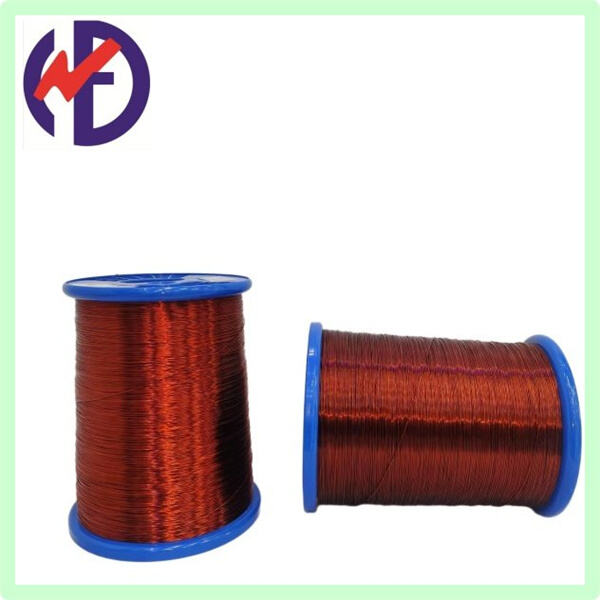One key element of enabling the flow of electricity to where it needs to go is transformer winding wire. A wire is the pathway that the electricity can travel to where it needs to go. Different types of wire are used for different jobs to ensure that electricity flows smoothly and safely, so today we 'll talk about the importance of transformer winding wire, how you should choose the right type for better performance, and how to install and maintain it properly, in this post. So you wait longer for electricity traffic jam to flow from one street to the other when transformer winding wire is choked. Electricity is made in a power plant, and delivered to homes, schools, and buildings by wires. The transformer winding wire reels help to ensure electric current flow smoothly and effectively. This is because, without the proper wire, an electrical current can get stuck, or worse, lead to a fire. This is why using low quality wire that is not up to the task is simply out of question.
Selecting the correct transformer winding wire is not yet as straightforward and uses or best practices are plenty. Another important factor of course, is wire size. The larger the wire, the more electricity it can handle. If the cable is not rated for the amount of power running though it, it can overheat, and at worse a small 10Amp wire will break or melt. If the wire is too large, however, it will be waste of materials, money and energy for the welding process. The gauge wire size is important so always pick the correct one to achieve best results. The other crucial thing to consider is the material of which the transformer winding wire is comprised. A popular conductive material for winding wire is copper since it conducts electricity well and can tolerate high temperatures. Sometimes transformer winding wire is also made of aluminum. In order for the wire to have a long service life and work well, you should select a strong and reliable texture.

The wire used in transformer winding is indispensable to help the power transport efficiently from one place to another. After all the portion is current to the wire, then there will be a magnetic field in coil due to which coil moves. The wire is then wrapped around a core, which boosts the magnetic fields and it also helps to make the electricity flow quicker. This process is crucial to enable electricity travel over long distances without significant losses in energy transmission. For as long as you can make use of a good quality of transformer wire, it will automatically increase the efficiency with less wastage will take place during the process.

Generally, we can choose several types of transformer winding wire and each type has its own advantages. Transformer winding wire More common types of transformer line are the paint glass silk line paper covering lines Among them, enamel coated wire is a good choice because it can resist heat and bear high voltages. Another common type that is used for small transformers includes paper-covered wire. Fiberglass-insulated wire is common for larger transformers, as it can carry heavier loads due to the increased strength. It is essential to select the appropriate wire based on the purpose for which it will be used i. e. for a transformer, in order to achieve maximum efficiency.

Transformer winding wire is an essential part of this equipment, and the performance directly affects the overall use effect. Only by ensuring proper installation and maintenance will it have a good use effect and quality assurance for a long time. While putting in the wire it’s essential to ensure that the twine is spooled tightly across the middle and fastened down into location. One of the biggest cause of problems with electricity is loose or damaged wire. You should also visually check the wire on a regular basis to ensure there is no fraying or overheating happening on the wire. These tips can help you improve the function and efficiency of your electrical system by making sure that you have always taken care of the winding transformer wire located on your property.
Copyright © Hua’erda Cable Group Co., Ltd. All Rights Reserved